Tag Archives: lobster
Already hit by China, Nova Scotia’s seafood sector braces for U.S. tariffs next week
 Stewart Lamont, managing director of Tangier Lobster Company Ltd., on Nova Scotia’s eastern shore, said the lobster sector is “incredibly anxious” as it waits to see how prices are affected. Lamont’s company exports live lobster to 13 countries around the world. “People are nervous,” he said in an interview Friday. “We have received more calls than normal from dealers on whether we would be interested in buying lobster from them this spring.” Meanwhile, Osborne Burke, general manager of Cape Breton-based seafood processor Victoria Co-operative Fisheries Ltd., said the pending U.S. tariffs are particularly concerning to the crab fishery because of the heavy reliance on the market south of the border. more, >>CLICK TO READ<< 08:02
Stewart Lamont, managing director of Tangier Lobster Company Ltd., on Nova Scotia’s eastern shore, said the lobster sector is “incredibly anxious” as it waits to see how prices are affected. Lamont’s company exports live lobster to 13 countries around the world. “People are nervous,” he said in an interview Friday. “We have received more calls than normal from dealers on whether we would be interested in buying lobster from them this spring.” Meanwhile, Osborne Burke, general manager of Cape Breton-based seafood processor Victoria Co-operative Fisheries Ltd., said the pending U.S. tariffs are particularly concerning to the crab fishery because of the heavy reliance on the market south of the border. more, >>CLICK TO READ<< 08:02
Lobster landings fall to 15-year low; higher prices offset decline
 the smallest total catch in 15 years, Maine’s lobstermen saw the second-highest price per pound ever paid at the dock in 2024, according to figures released by Maine’s Department of Marine Resources (DMR). The year’s total catch of 86.1 million pounds was nearly 11 million pounds less than the 93 million pounds reported for 2023. By comparison, from 2010 through 2019, the state’s lobstermen caught more than 100 million pounds every year, with a record catch of 132,604,691 pounds in 2016. Offsetting the decline in the total catch numbers, the price per pound that lobstermen received at the dock rose to a near-record $6.14 from just $4.97 for the previous year, trailing only the $6.71 paid in 2021. more, >>CLICK TO READ<< 11:28
the smallest total catch in 15 years, Maine’s lobstermen saw the second-highest price per pound ever paid at the dock in 2024, according to figures released by Maine’s Department of Marine Resources (DMR). The year’s total catch of 86.1 million pounds was nearly 11 million pounds less than the 93 million pounds reported for 2023. By comparison, from 2010 through 2019, the state’s lobstermen caught more than 100 million pounds every year, with a record catch of 132,604,691 pounds in 2016. Offsetting the decline in the total catch numbers, the price per pound that lobstermen received at the dock rose to a near-record $6.14 from just $4.97 for the previous year, trailing only the $6.71 paid in 2021. more, >>CLICK TO READ<< 11:28
Atlantic lobster industry could be hurt by tariffs from China, U.S.
 Atlantic Canada’s $2.9-billion lobster industry could be impacted by tariffs imposed by the United States and China, an industry spokesperson said Tuesday. “At the moment we really don’t know how much impact there will be,” said Geoff Irvine, executive director of the Halifax-based Canadian Lobster Council. China imposed a 25 per cent tariff on Canadian seafood March 20, and U.S. President Donald Trump has threatened to begin tariffs on Canadian products on April 2. Tariffs on Atlantic Canada’s lucrative lobster fishery were among the topics of discussion at the Maritime Fishermen’s Union annual convention, held in Moncton Monday and Tuesday. Irvine said Atlantic Canada exports approximately $2.9 billion worth of lobster annually, with 67 per cent going to the United States and 20 per cent going to China. more, >>CLICK TO READ<< 08:34
Atlantic Canada’s $2.9-billion lobster industry could be impacted by tariffs imposed by the United States and China, an industry spokesperson said Tuesday. “At the moment we really don’t know how much impact there will be,” said Geoff Irvine, executive director of the Halifax-based Canadian Lobster Council. China imposed a 25 per cent tariff on Canadian seafood March 20, and U.S. President Donald Trump has threatened to begin tariffs on Canadian products on April 2. Tariffs on Atlantic Canada’s lucrative lobster fishery were among the topics of discussion at the Maritime Fishermen’s Union annual convention, held in Moncton Monday and Tuesday. Irvine said Atlantic Canada exports approximately $2.9 billion worth of lobster annually, with 67 per cent going to the United States and 20 per cent going to China. more, >>CLICK TO READ<< 08:34
‘Cruel’ tariff threats bring endless uncertainty to N.B. fisheries
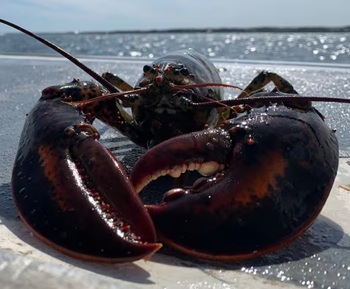 Leaders in New Brunswick’s fishing industry are not mincing words when it comes to the cloud of uncertainty hanging over the constant back and forth of tariff threats from U.S. President Donald Trump. “Oh, it’s painful. It’s painful,” said Geoff Irvine, executive director of the Lobster Council of Canada, in an interview. The latest date for tariffs to take effect, now set for April 2, coincides with the opening of lobster season in some sectors of the Atlantic region, but that’s about all Irvine could say for certain about the potential impact. “Honestly, I don’t have a clue. Every single processor, shipper and exporter will have to talk to their customers.” He said the constantly changing news is destabilizing. more, >>CLICK TO READ<< 11:31
Leaders in New Brunswick’s fishing industry are not mincing words when it comes to the cloud of uncertainty hanging over the constant back and forth of tariff threats from U.S. President Donald Trump. “Oh, it’s painful. It’s painful,” said Geoff Irvine, executive director of the Lobster Council of Canada, in an interview. The latest date for tariffs to take effect, now set for April 2, coincides with the opening of lobster season in some sectors of the Atlantic region, but that’s about all Irvine could say for certain about the potential impact. “Honestly, I don’t have a clue. Every single processor, shipper and exporter will have to talk to their customers.” He said the constantly changing news is destabilizing. more, >>CLICK TO READ<< 11:31
Nova Scotia lobster industry facing headwinds after Clearwater exit from live shipping
 Those who work in the seafood processing and shipping industry in Nova Scotia say they were surprised by Clearwater Seafoods’ decision to exit the live lobster business. But they also say it’s a sign from a giant that those remaining in the industry need to figure out how to stabilize the economics of it. “It’s a bit of a wake-up call for arguably the leading company to exit lobster, but it will also mean we can individually look at things and tweak many aspects of our business model,” said Stewart Lamont, managing director of Tangier Lobster Company, a competitor to Clearwater. “Fortunately, we still have a captive international audience. Clients in Europe and Asia and the Middle East want to buy our lobster.” more, >>CLICK TO READ<< 06:53
Those who work in the seafood processing and shipping industry in Nova Scotia say they were surprised by Clearwater Seafoods’ decision to exit the live lobster business. But they also say it’s a sign from a giant that those remaining in the industry need to figure out how to stabilize the economics of it. “It’s a bit of a wake-up call for arguably the leading company to exit lobster, but it will also mean we can individually look at things and tweak many aspects of our business model,” said Stewart Lamont, managing director of Tangier Lobster Company, a competitor to Clearwater. “Fortunately, we still have a captive international audience. Clients in Europe and Asia and the Middle East want to buy our lobster.” more, >>CLICK TO READ<< 06:53
Chiefs granted intervenor status in border-crossing lobster case
 An Indigenous nation has been granted intervenor status in a case involving a U.S.-based lobster fisher accused of illegally fishing in Passamaquoddy Bay. Erik D. Francis, 55, of Perry, Maine, faces charges under the Coastal Fisheries Protection Act alleging that he illegally fished from a foreign vessel in New Brunswick waters. According to court documents, he was stopped on Nov. 15, 2022, off the coast of Deer Island by fisheries officials, who seized 36 lobster traps owned by Francis. Francis, who is self-represented, has claimed Indigenous fishing rights as a part of the Peskotomuhkati (Passamaquoddy) Nation, which has two communities in Maine including Sipayik (Pleasant Point), where Francis lives, and the community known as Skutik in Charlotte County. more, >>CLICK TO READ<< 09:58
An Indigenous nation has been granted intervenor status in a case involving a U.S.-based lobster fisher accused of illegally fishing in Passamaquoddy Bay. Erik D. Francis, 55, of Perry, Maine, faces charges under the Coastal Fisheries Protection Act alleging that he illegally fished from a foreign vessel in New Brunswick waters. According to court documents, he was stopped on Nov. 15, 2022, off the coast of Deer Island by fisheries officials, who seized 36 lobster traps owned by Francis. Francis, who is self-represented, has claimed Indigenous fishing rights as a part of the Peskotomuhkati (Passamaquoddy) Nation, which has two communities in Maine including Sipayik (Pleasant Point), where Francis lives, and the community known as Skutik in Charlotte County. more, >>CLICK TO READ<< 09:58
The Lobsters At This No-Fuss Oregon Restaurant Are Out-Of-This-World Delicious
 Imagine a place where seafood dreams come true, and the lobster is so good it might make you consider a permanent move to Portland. Welcome to Jake’s Famous Crawfish, a culinary gem that’s been serving up ocean-fresh delights since 1892. Let me tell you, folks, when it comes to seafood in Portland, Jake’s Famous Crawfish is the real deal. This place has been around longer than some countries, and there’s a good reason for that – they know their fish. Now, I know what you’re thinking: “Another seafood joint? What makes this one so special?” Well, hold onto your bibs, because we’re about to dive into a world of crustacean celebration that’ll make your taste buds do a happy dance. Jake’s Famous Crawfish may have ‘crawfish’ in its name, but their lobster game is strong enough to make a New Englander weep with joy. The Maine lobster is the star of the show, and boy, does it know how to work the room. Photos, more, >>CLICK TO READ<< 14:49
Imagine a place where seafood dreams come true, and the lobster is so good it might make you consider a permanent move to Portland. Welcome to Jake’s Famous Crawfish, a culinary gem that’s been serving up ocean-fresh delights since 1892. Let me tell you, folks, when it comes to seafood in Portland, Jake’s Famous Crawfish is the real deal. This place has been around longer than some countries, and there’s a good reason for that – they know their fish. Now, I know what you’re thinking: “Another seafood joint? What makes this one so special?” Well, hold onto your bibs, because we’re about to dive into a world of crustacean celebration that’ll make your taste buds do a happy dance. Jake’s Famous Crawfish may have ‘crawfish’ in its name, but their lobster game is strong enough to make a New Englander weep with joy. The Maine lobster is the star of the show, and boy, does it know how to work the room. Photos, more, >>CLICK TO READ<< 14:49
Stricter lobster fishing rules scrapped after complaints from fishermen about harm to industry
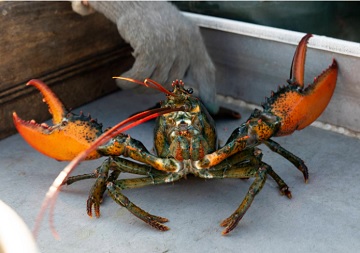 Fishing industry regulators have decided to scrap stricter new lobster fishing standards off New England in the wake of months of protest from lobster fishermen that the rules were unnecessary and would bankrupt harvesters. The regulators were planning to institute new rules this summer that increased the minimum legal harvest size for lobsters in some of the most important fishing grounds in the world. The Atlantic States Marine Fisheries Council, which manages the fishery, said the changes were important to preserve the future of a lobster population that has shown recent signs of decline. Many commercial fishermen adamantly opposed the changes, which would have required them to throw back previously market-ready lobsters. Links, more, >>CLICK TO READ<< 12:39
Fishing industry regulators have decided to scrap stricter new lobster fishing standards off New England in the wake of months of protest from lobster fishermen that the rules were unnecessary and would bankrupt harvesters. The regulators were planning to institute new rules this summer that increased the minimum legal harvest size for lobsters in some of the most important fishing grounds in the world. The Atlantic States Marine Fisheries Council, which manages the fishery, said the changes were important to preserve the future of a lobster population that has shown recent signs of decline. Many commercial fishermen adamantly opposed the changes, which would have required them to throw back previously market-ready lobsters. Links, more, >>CLICK TO READ<< 12:39

Maine and NH lobstermen celebrate reversal of lobster catch size limits
The Atlantic States Marine Fisheries Commission have walked back new regulations that New Hampshire and Maine lobstermen said would have dire economic consequences to their industry. The commission voted Tuesday to repeal key elements of a proposed increase to minimum allowable catch sizes for Gulf of Maine lobster. The announcement comes after officials in Maine and New Hampshire, which together account for most of U.S. lobster landings, announced they would not cooperate with the proposal. “New England Fishermen’s Stewardship Association (NEFSA) thanks the commission for heeding the voice of lobstermen,” said NEFSA COO and fourth-generation lobsterman Dustin Delano. “Raising catch sizes at this time would bankrupt many lobstermen and surrender the U.S. market to foreign competitors. NEFSA is grateful that the commission has chosen to support our historic trade, which contributes billions to New England’s economy and shapes the character of the region.” links, more, >>CLICK TO READ<< 20:11
Researchers to monitor socioeconomic resilience of Maine’s lobster fishery
 A University of Maine-led research team has developed new indicators to measure the socioeconomic resilience of Maine’s lobster fishery. The study aims to deepen understanding of the industry’s challenges and guide future policies supporting the fishery and the communities it sustains. Maine’s lobster fishery, supporting thousands of jobs, is closely monitored and managed through biological surveys and industry reports. However, these statistics don’t capture the full impact of supply disruptions, market shifts and geopolitical tensions on the industry and its communities. With commercial lobster landings dropping 27 percent between 2016 and 2022, the Maine Lobstermen’s Association began exploring new ways to measure the fishery’s socioeconomic resilience, helping leaders better respond to the industry’s challenges. more, >>CLICK TO READ<< 05:53
A University of Maine-led research team has developed new indicators to measure the socioeconomic resilience of Maine’s lobster fishery. The study aims to deepen understanding of the industry’s challenges and guide future policies supporting the fishery and the communities it sustains. Maine’s lobster fishery, supporting thousands of jobs, is closely monitored and managed through biological surveys and industry reports. However, these statistics don’t capture the full impact of supply disruptions, market shifts and geopolitical tensions on the industry and its communities. With commercial lobster landings dropping 27 percent between 2016 and 2022, the Maine Lobstermen’s Association began exploring new ways to measure the fishery’s socioeconomic resilience, helping leaders better respond to the industry’s challenges. more, >>CLICK TO READ<< 05:53
Jamie Sarkonak: Feds’ racial politics have plunged Canadian fisheries into chaos
 There are Indigenous fishers, and there are non-Indigenous fishers — and every year, the federal government takes more and more away from one to give to the other, citing reconciliation and an ever-expanding notion of Indigenous rights. Up until last week, the 2025 edition of this game of racial redistribution involved the Liberal government planning to take away between 75 and 90 per cent of the commercial American eel quota and giving 50 per cent to First Nations in Atlantic Canada, with another 27 per cent going to employees of those who already have eel licences. Eel fishers were only saved by a last-minute cancellation of the changes on Thursday, when Fisheries Minister Diane Lebouthillier came to her senses and called it off. Indeed, in 2021, commercial crab fishers in one fishing zone of British Columbia had half of their trapping allocation taken by the government and redistributed to Indigenous people to assist them in earning a “moderate livelihood.” more, >>CLICK TO READ<< 06:46
There are Indigenous fishers, and there are non-Indigenous fishers — and every year, the federal government takes more and more away from one to give to the other, citing reconciliation and an ever-expanding notion of Indigenous rights. Up until last week, the 2025 edition of this game of racial redistribution involved the Liberal government planning to take away between 75 and 90 per cent of the commercial American eel quota and giving 50 per cent to First Nations in Atlantic Canada, with another 27 per cent going to employees of those who already have eel licences. Eel fishers were only saved by a last-minute cancellation of the changes on Thursday, when Fisheries Minister Diane Lebouthillier came to her senses and called it off. Indeed, in 2021, commercial crab fishers in one fishing zone of British Columbia had half of their trapping allocation taken by the government and redistributed to Indigenous people to assist them in earning a “moderate livelihood.” more, >>CLICK TO READ<< 06:46
NH Gov. Kelly Ayotte joins Maine in rejecting new lobster regulations to protect industry
 New Hampshire has joined Maine in rejecting new regulations that would increase the minimum length of catchable lobster this summer. Republican Gov. Kelly Ayotte sent a letter to the Atlantic States Marine Fisheries Commission (ASMFC) that oversees lobster caught by New Hampshire and Maine fishermen, stating New Hampshire would not comply with the guidelines set to go into effect July 1. The new regulation requires an increase in the size of the gauge used by fishermen to measure lobster length, determining whether they can be caught or must be released. Lobstermen measure the size of a lobster by gauging its carapace (shell) from the eye socket to the tail. more, >>CLICK TO READ<< 16:36
New Hampshire has joined Maine in rejecting new regulations that would increase the minimum length of catchable lobster this summer. Republican Gov. Kelly Ayotte sent a letter to the Atlantic States Marine Fisheries Commission (ASMFC) that oversees lobster caught by New Hampshire and Maine fishermen, stating New Hampshire would not comply with the guidelines set to go into effect July 1. The new regulation requires an increase in the size of the gauge used by fishermen to measure lobster length, determining whether they can be caught or must be released. Lobstermen measure the size of a lobster by gauging its carapace (shell) from the eye socket to the tail. more, >>CLICK TO READ<< 16:36
Save Our Fishermen’s Future RALLY!
 Maine did it! So can New Hampshire! Save Our Fishermen’s Future Rally! Atlantic States Maries Fisheries Commission ASMFC ruled that lobster fisherman must throw back any lobster under one to one and one-quarter pounds, a new government regulation. The last time lobster length was increased was in 1983 and for the following three years the industry almost collapsed. If this increase is implemented on July 1st this year a good chunk of our fishermen will not survive.Come and meet the men and women who risk a lot to fish our oceans and are the economic drivers of much of our seacoast economy. Let’s help them by attending the Save Our Seacoast Economy event at the New Castle Town Hall Conference Room 49 Main St. New Castle, NH at 6:00 PM. more, >>CLICK TO READ<< 08:42
Maine did it! So can New Hampshire! Save Our Fishermen’s Future Rally! Atlantic States Maries Fisheries Commission ASMFC ruled that lobster fisherman must throw back any lobster under one to one and one-quarter pounds, a new government regulation. The last time lobster length was increased was in 1983 and for the following three years the industry almost collapsed. If this increase is implemented on July 1st this year a good chunk of our fishermen will not survive.Come and meet the men and women who risk a lot to fish our oceans and are the economic drivers of much of our seacoast economy. Let’s help them by attending the Save Our Seacoast Economy event at the New Castle Town Hall Conference Room 49 Main St. New Castle, NH at 6:00 PM. more, >>CLICK TO READ<< 08:42
NH and Maine lobstermen push back against new size rule amid economic fears
 The regulation involves an increase in the size of the gauge used by fishermen to measure lobster length to determine if they can be caught or must be released. The new rule, however, has received blowback from local lobstermen. Maine has opted not to implement the change in response to concerns from the lobster industry, while lawmakers in New Hampshire are advocating for their leaders to make a similar decision. State Rep. Aboul Khan, R-Seabrook, warns that the new rule could lead to a loss of a third of lobstermen’s catch this year, adding to the challenges already posed by existing regulations. more, >>CLICK TO READ<< 09:06
The regulation involves an increase in the size of the gauge used by fishermen to measure lobster length to determine if they can be caught or must be released. The new rule, however, has received blowback from local lobstermen. Maine has opted not to implement the change in response to concerns from the lobster industry, while lawmakers in New Hampshire are advocating for their leaders to make a similar decision. State Rep. Aboul Khan, R-Seabrook, warns that the new rule could lead to a loss of a third of lobstermen’s catch this year, adding to the challenges already posed by existing regulations. more, >>CLICK TO READ<< 09:06
Are microplastics ending up in Atlantic lobster? This researcher hopes to find out
 An assistant professor in Nova Scotia has been awarded a five-year grant to study the double impact of microplastics and climate change on aquatic organisms. Jordan Park will conduct the research at Université Sainte-Anne using lobster larvae and zooplankton. Park hopes to trace whether microplastics end up in lobster found in Atlantic waters. The grant for his research is through the Natural Sciences and Engineering Research Council of Canada. Microplastics are tiny bits of plastic, many smaller than the diameter of a strand of hair. But they don’t start out that small, said Park — plastic wares like food packages end up in the ocean and get broken down over time. more, >>CLICK TO READ<< 08:48
An assistant professor in Nova Scotia has been awarded a five-year grant to study the double impact of microplastics and climate change on aquatic organisms. Jordan Park will conduct the research at Université Sainte-Anne using lobster larvae and zooplankton. Park hopes to trace whether microplastics end up in lobster found in Atlantic waters. The grant for his research is through the Natural Sciences and Engineering Research Council of Canada. Microplastics are tiny bits of plastic, many smaller than the diameter of a strand of hair. But they don’t start out that small, said Park — plastic wares like food packages end up in the ocean and get broken down over time. more, >>CLICK TO READ<< 08:48
Statement to the Maine Lobster Industry from Commissioner Keliher Regarding Decision to Pull Lobster Gauge Regulation
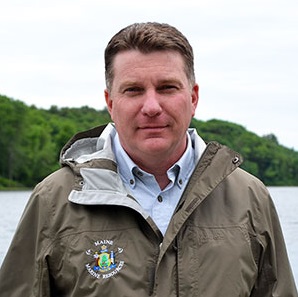 Last night, after hearing loud and clear from Maine lobster industry members that they are unified in their opposition to a proposed rule change that would increase the minimum gauge size starting in July of this year, with approval from Governor Mills I decided to pull the regulation. As many of you know, this regulation, which was set to go into effect on July 1st of this year, was a proactive measure intended to respond to declines we have seen in sub-legal lobsters, which are the lobsters that are just below the current legal size limit. The objective of this measure was to leave those small lobsters on bottom for another year so they could mature and reproduce, which would buffer this vital resource against the effects of a changing climate. more, >>CLICK TO READ<< 12:32
Last night, after hearing loud and clear from Maine lobster industry members that they are unified in their opposition to a proposed rule change that would increase the minimum gauge size starting in July of this year, with approval from Governor Mills I decided to pull the regulation. As many of you know, this regulation, which was set to go into effect on July 1st of this year, was a proactive measure intended to respond to declines we have seen in sub-legal lobsters, which are the lobsters that are just below the current legal size limit. The objective of this measure was to leave those small lobsters on bottom for another year so they could mature and reproduce, which would buffer this vital resource against the effects of a changing climate. more, >>CLICK TO READ<< 12:32
New lobster minimum catch sizes could lead to industry change, Golden reacts DMR decision
 A potential change to the lobster industry would impact the allowable lobster catch size. Dozens of lobstermen who do not support the change spoke out at a Department of Marine Resources public hearing in Augusta on Thursday night. The public hearing discussed a proposal that would change the minimum allowable catch size for lobsters from 3 1/4 inches to 3 5/16 inches. A change of 1/16 of an inch may seem small, but to fishermen, it’s a big deal. “It’s our livelihoods you’re messing with,” lobsterman Wayne Delano said. “The question here is not will lobstermen and processors go out of business because of this increase, but rather how many will be put out of business because of this increase,” said Dustin Delano, lobsterman and chief operating officer at the New England Fishermen’s Stewardship Association. more, >>CLICK TO READ<< 08:35
A potential change to the lobster industry would impact the allowable lobster catch size. Dozens of lobstermen who do not support the change spoke out at a Department of Marine Resources public hearing in Augusta on Thursday night. The public hearing discussed a proposal that would change the minimum allowable catch size for lobsters from 3 1/4 inches to 3 5/16 inches. A change of 1/16 of an inch may seem small, but to fishermen, it’s a big deal. “It’s our livelihoods you’re messing with,” lobsterman Wayne Delano said. “The question here is not will lobstermen and processors go out of business because of this increase, but rather how many will be put out of business because of this increase,” said Dustin Delano, lobsterman and chief operating officer at the New England Fishermen’s Stewardship Association. more, >>CLICK TO READ<< 08:35
Lobster 207 settles long-standing lawsuit against former CEO for $5 million
 Lobster 207 will receive a $5 million settlement against its former CEO Warren Pettegrow, his parents Anthony and Josette Pettegrow, and co-defendants accused in a long-running legal saga of overcharging the lobster wholesaler for lobsters and pocketing the difference. The settlement ends what has been a long back-and-forth in court that generated hundreds of legal documents. “We are pretty relieved to move this forward,” Lobster 207 President Michael Yohe said at a Jan. 7 press conference. “It’s just a new start for us.” The parties reached the settlement on Jan. 3, just three days before jury selection was scheduled in U.S. District Court in Bangor. Photos, more>>CLICK TO READ<< 11:40
Lobster 207 will receive a $5 million settlement against its former CEO Warren Pettegrow, his parents Anthony and Josette Pettegrow, and co-defendants accused in a long-running legal saga of overcharging the lobster wholesaler for lobsters and pocketing the difference. The settlement ends what has been a long back-and-forth in court that generated hundreds of legal documents. “We are pretty relieved to move this forward,” Lobster 207 President Michael Yohe said at a Jan. 7 press conference. “It’s just a new start for us.” The parties reached the settlement on Jan. 3, just three days before jury selection was scheduled in U.S. District Court in Bangor. Photos, more>>CLICK TO READ<< 11:40
Maine Lobstering Union’s Lobster 207 Receives in Excess of $5 Million Settlement in Giant Step Forward for Maine’s Lobstering Communities — Lobster 207, a co-op formed by the Maine Lobstering Union, is pleased to announce that it has emerged with a more than a $5 million settlement in its favor after five years of litigation against a former CEO, Warren Pettegrow, his parents, their companies and another alleged co-conspirator. -more,>>CLICK TO READ<<
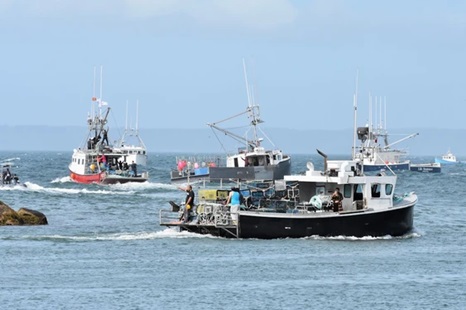
COMMENTARY: Bringing peace to Atlantic lobster fisheries, By Geoffrey V. Hurly
The ongoing controversy between Indigenous and non-Indigenous fishing interests is centred over equity in fishing rights. Indigenous groups claim that their treaty rights (signed in the 18th century) allow them to fish lobster (or any other species for that matter) anytime of the year, including outside the regulated fishing seasons imposed by Fisheries and Oceans Canada (DFO). Non-Indigenous harvesters argue that Indigenous people should not have the right to catch and sell lobsters at a time of year when commercial fishermen don’t. They worry about their own livelihood if lobsters are fished out of season during their moulting breeding time. more, >>CLICK TO READ<< 13:39
REMINDER: Notice of Proposed Rulemaking: Chapter 25.76 Lobster Minimum Size
 Attention all lobster harvesters and dealers: The Maine Department of Marine Resources has issued a Notice of Proposed Rulemaking for: Chapter 25.76 Lobster Minimum Size. A brief summary: This proposed rulemaking incorporates the minimum lobster size required by Addendum XXVII: Increasing Protection of the Gulf of Maine/Georges Bank Spawning Stock that was originally approved by the Atlantic States Marine Fisheries Commission (ASMFC) in May 2023. In October 2024 Addendum XXXI postponed the implementation of certain measures from Addendum XXVII to July 1, 2025. For compliance with the current Interstate Fisheries Management Plan, this regulation implements changing the minimum size of lobster from 3 ¼ inches to 3 5/16 inches, effective July 1, 2025. >>CLICK TO READ<< the full notice. 14:25
Attention all lobster harvesters and dealers: The Maine Department of Marine Resources has issued a Notice of Proposed Rulemaking for: Chapter 25.76 Lobster Minimum Size. A brief summary: This proposed rulemaking incorporates the minimum lobster size required by Addendum XXVII: Increasing Protection of the Gulf of Maine/Georges Bank Spawning Stock that was originally approved by the Atlantic States Marine Fisheries Commission (ASMFC) in May 2023. In October 2024 Addendum XXXI postponed the implementation of certain measures from Addendum XXVII to July 1, 2025. For compliance with the current Interstate Fisheries Management Plan, this regulation implements changing the minimum size of lobster from 3 ¼ inches to 3 5/16 inches, effective July 1, 2025. >>CLICK TO READ<< the full notice. 14:25
John DeMont: The magic of Christmas is the people who make it happen
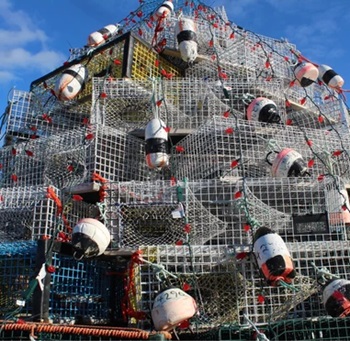 I agree wholeheartedly with the notion that there is something magical about Christmas. The magic, in part, is that it somehow happens every year in our house with no discernible help from me. I say this with shame, not pride. Yet, in some ways, it is for the best. The gift giving — which requires a razor’s edge balance of taste, pragmatism and good will — falls, for good reason, as lightly as a snowflake upon my shoulders. At this point, a thought often occurs to me similar to the one passing through my mind when I head downstairs on Christmas morning: that for this magic to occur, extraordinary people must do remarkable things. In the case of the fisher folk, they must rise in the dark and don layers of clothes. They must drive to a wharf, then they must steam kilometres out on the wild Atlantic Ocean, where they then will hoist up traps from the depths. more, >>CLICK TO READ<< 08:22
I agree wholeheartedly with the notion that there is something magical about Christmas. The magic, in part, is that it somehow happens every year in our house with no discernible help from me. I say this with shame, not pride. Yet, in some ways, it is for the best. The gift giving — which requires a razor’s edge balance of taste, pragmatism and good will — falls, for good reason, as lightly as a snowflake upon my shoulders. At this point, a thought often occurs to me similar to the one passing through my mind when I head downstairs on Christmas morning: that for this magic to occur, extraordinary people must do remarkable things. In the case of the fisher folk, they must rise in the dark and don layers of clothes. They must drive to a wharf, then they must steam kilometres out on the wild Atlantic Ocean, where they then will hoist up traps from the depths. more, >>CLICK TO READ<< 08:22
Notice of Proposed Rulemaking: Chapter 25.76 Lobster Minimum Size
 This proposed rule-making incorporates the minimum lobster size required by Addendum XXVII: Increasing Protection of the Gulf of Maine/Georges Bank Spawning Stock that was originally approved by the Atlantic States Marine Fisheries Commission (ASMFC) in May 2023. In October 2024 Addendum XXXI postponed the implementation of certain measures from Addendum XXVII to July 1, 2025. For compliance with the current Interstate Fisheries Management Plan, this regulation implements changing the minimum size of lobster from 3 ¼ inches to 3 5/16 inches, effective July 1, 2025. more, >>CLICK TO READ<< 09:43
This proposed rule-making incorporates the minimum lobster size required by Addendum XXVII: Increasing Protection of the Gulf of Maine/Georges Bank Spawning Stock that was originally approved by the Atlantic States Marine Fisheries Commission (ASMFC) in May 2023. In October 2024 Addendum XXXI postponed the implementation of certain measures from Addendum XXVII to July 1, 2025. For compliance with the current Interstate Fisheries Management Plan, this regulation implements changing the minimum size of lobster from 3 ¼ inches to 3 5/16 inches, effective July 1, 2025. more, >>CLICK TO READ<< 09:43
End to lobster war with China could save Australia’s fishermen
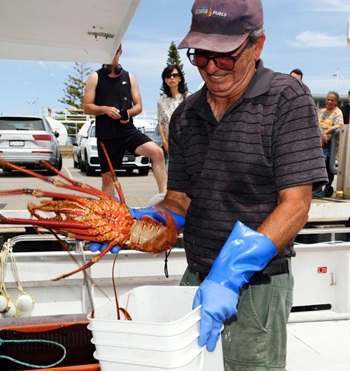 In this part of the world, the small, spiny, clawless western rock lobsters — commonly known in Australia as crayfish — play a starring role on seafood platters. “It’s our busiest time of the year,” said James Paratore, a fisherman who will be among those selling the lobsters from the back of his boat on Monday with his father Joe in Fremantle, near Perth. While trade in the local delicacy picks up over the festive period, the fishing industry has struggled since losing its biggest customer by far: China. Four years ago, exports to the lucrative Chinese market were sealed off by a trade war. Now they are in a cautiously celebratory mood after Beijing confirmed on Friday its trade ban on Australian rock lobsters had officially been lifted. Photos, more, >>CLICK TO READ<< 06:54
In this part of the world, the small, spiny, clawless western rock lobsters — commonly known in Australia as crayfish — play a starring role on seafood platters. “It’s our busiest time of the year,” said James Paratore, a fisherman who will be among those selling the lobsters from the back of his boat on Monday with his father Joe in Fremantle, near Perth. While trade in the local delicacy picks up over the festive period, the fishing industry has struggled since losing its biggest customer by far: China. Four years ago, exports to the lucrative Chinese market were sealed off by a trade war. Now they are in a cautiously celebratory mood after Beijing confirmed on Friday its trade ban on Australian rock lobsters had officially been lifted. Photos, more, >>CLICK TO READ<< 06:54
Researcher urges caution on rock lobster catch limit increase
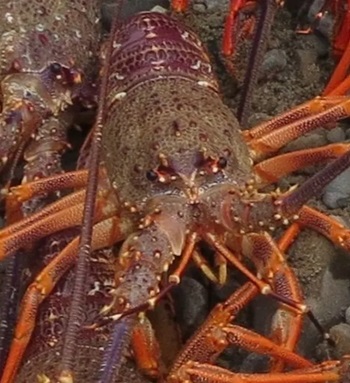 Seafood industry players say they will welcome an increase in catch limits for rock lobster and Pacific bluefin tuna if a proposal by the Oceans and Fisheries Minister gets the green light. However, a researcher is warning that increasing catch limits for rock lobsters is too risky. Oceans and Fisheries Minister Shane Jones has reviewed catch limits for spiny red rock lobster in the Hauraki Gulf, Coromandel and Bay of Plenty region, known as CRA 2, as well as Otago or CRA 7, and for Pacific bluefin tuna in TOR 1 (all of New Zealand). Consultation opened on Friday. The rock lobster fisheries were valuable for the economy and culturally, Jones said. “The fisheries provide jobs, bring significant export income for New Zealand, and are popular with recreational fishers. It’s important that we strike the right balance between getting the most value possible from these fisheries while ensuring their sustainability. This is reflected in the proposals.” more, >>CLICK TO READ<< 13:52
Seafood industry players say they will welcome an increase in catch limits for rock lobster and Pacific bluefin tuna if a proposal by the Oceans and Fisheries Minister gets the green light. However, a researcher is warning that increasing catch limits for rock lobsters is too risky. Oceans and Fisheries Minister Shane Jones has reviewed catch limits for spiny red rock lobster in the Hauraki Gulf, Coromandel and Bay of Plenty region, known as CRA 2, as well as Otago or CRA 7, and for Pacific bluefin tuna in TOR 1 (all of New Zealand). Consultation opened on Friday. The rock lobster fisheries were valuable for the economy and culturally, Jones said. “The fisheries provide jobs, bring significant export income for New Zealand, and are popular with recreational fishers. It’s important that we strike the right balance between getting the most value possible from these fisheries while ensuring their sustainability. This is reflected in the proposals.” more, >>CLICK TO READ<< 13:52
Sipekne’katik claims ‘significant progress’ in talks with Ottawa over controversial N.S. lobster fishery
 The First Nation at the centre of a highly contentious out-of-season lobster fishery in southwest Nova Scotia says mediation with the federal government is bearing fruit, with lengthy meetings between both sides leading to the first “meaningful dialogue” in 25 years. The comments from the lawyer for Sipekne’katik First Nation come in a letter to a Nova Scotia Supreme Court judge that asks that litigation launched by the band against the federal government in 2021 be paused for another six months to allow negotiations to continue. The two sides, along with intervenor Unified Fisheries Conservation Alliance, which represents commercial fishing interests, are expected to discuss the time extension in court this morning. more, >>CLICK TO READ<< 08:02
The First Nation at the centre of a highly contentious out-of-season lobster fishery in southwest Nova Scotia says mediation with the federal government is bearing fruit, with lengthy meetings between both sides leading to the first “meaningful dialogue” in 25 years. The comments from the lawyer for Sipekne’katik First Nation come in a letter to a Nova Scotia Supreme Court judge that asks that litigation launched by the band against the federal government in 2021 be paused for another six months to allow negotiations to continue. The two sides, along with intervenor Unified Fisheries Conservation Alliance, which represents commercial fishing interests, are expected to discuss the time extension in court this morning. more, >>CLICK TO READ<< 08:02
DFO to increase year-round lobster gear monitoring in Bay of Fundy
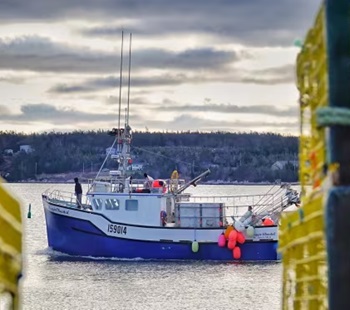 Enforcement officers with the federal Department of Fisheries and Oceans will soon have a new tool to lift, check and seize illegal lobster fishing gear from the waters between Nova Scotia and New Brunswick. The department is seeking a crew and vessel that would be contracted to take DFO officers on patrols to inspect fishing equipment. The patrol work isn’t new, but this contract represents an increase in surveillance and enforcement in an area where the fishing industry has called on officers to do more to deter illegal fishing operations. The contracted vessel would be responsible for patrolling throughout the Bay of Fundy and “be able to berth at various ports in New Brunswick and Nova Scotia,” according to the documents published online. more, >>CLICK TO READ<< 07:33
Enforcement officers with the federal Department of Fisheries and Oceans will soon have a new tool to lift, check and seize illegal lobster fishing gear from the waters between Nova Scotia and New Brunswick. The department is seeking a crew and vessel that would be contracted to take DFO officers on patrols to inspect fishing equipment. The patrol work isn’t new, but this contract represents an increase in surveillance and enforcement in an area where the fishing industry has called on officers to do more to deter illegal fishing operations. The contracted vessel would be responsible for patrolling throughout the Bay of Fundy and “be able to berth at various ports in New Brunswick and Nova Scotia,” according to the documents published online. more, >>CLICK TO READ<< 07:33
In once tranquil N.S. town, intimidation in the lobster industry now all too common
 Standing by a bullet hole in his dining room wall, lobster buyer Geoffrey Jobert says such attacks have become an all-too-familiar reality in Nova Scotia’s largest fishery. The 30-year-old and his younger brother came to the area from Halifax to take over his father’s processing plant five years ago and now employ 100 people. He’s enjoyed making friends in the francophone town and paddling along a stunning beach near his home when he has a few spare hours. But last year, threats started after he agreed to buy the catch of a licensed, commercial harvester who was no longer willing to provide his catch to facilities allegedly purchasing illegally caught lobster. And Jobert soon learned he wasn’t the only person in the communities along the Acadian shore who experienced late-night attacks. more, >>CLICK TO READ<< 06:35
Standing by a bullet hole in his dining room wall, lobster buyer Geoffrey Jobert says such attacks have become an all-too-familiar reality in Nova Scotia’s largest fishery. The 30-year-old and his younger brother came to the area from Halifax to take over his father’s processing plant five years ago and now employ 100 people. He’s enjoyed making friends in the francophone town and paddling along a stunning beach near his home when he has a few spare hours. But last year, threats started after he agreed to buy the catch of a licensed, commercial harvester who was no longer willing to provide his catch to facilities allegedly purchasing illegally caught lobster. And Jobert soon learned he wasn’t the only person in the communities along the Acadian shore who experienced late-night attacks. more, >>CLICK TO READ<< 06:35






 Clearwater Seafoods is making big changes to its inshore lobster business and is temporarily laying off workers at its Arichat, N.S. processing facility. Employees were informed Wednesday that the layoffs were effective the same day, and that it was anticipated they would be recalled back to work by a new owner around the first week of May. “We are currently in late-stage negotiations to sell our Arichat live lobster holding facility to an experienced local operator, and we will no longer operate the seasonal lobster processing line at our Lockeport facility,” wrote Christine Penney, vice-president of sustainability and public affairs. Video,
Clearwater Seafoods is making big changes to its inshore lobster business and is temporarily laying off workers at its Arichat, N.S. processing facility. Employees were informed Wednesday that the layoffs were effective the same day, and that it was anticipated they would be recalled back to work by a new owner around the first week of May. “We are currently in late-stage negotiations to sell our Arichat live lobster holding facility to an experienced local operator, and we will no longer operate the seasonal lobster processing line at our Lockeport facility,” wrote Christine Penney, vice-president of sustainability and public affairs. Video, 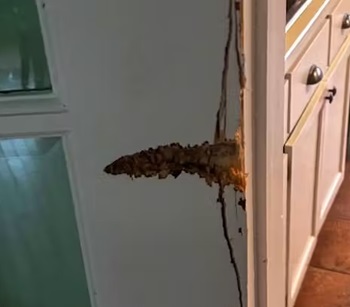



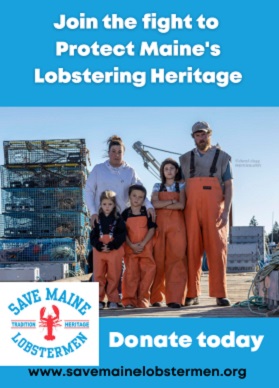
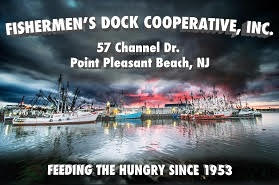
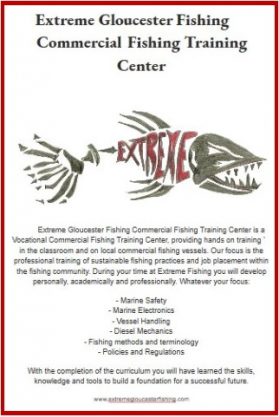


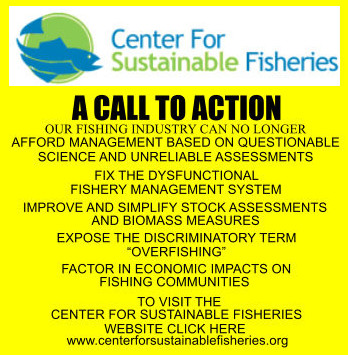
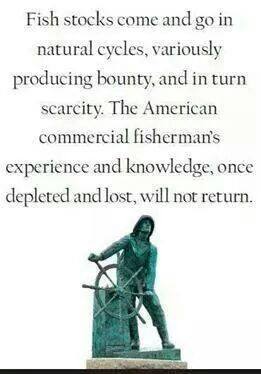
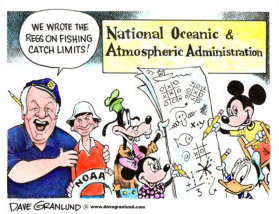
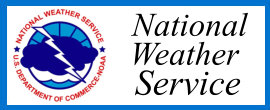

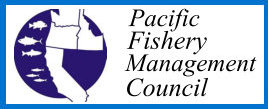
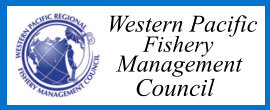
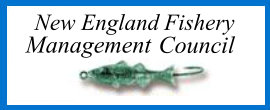


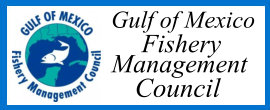
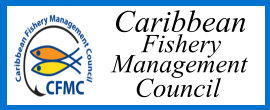
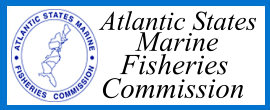
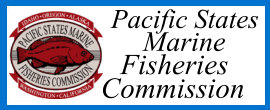
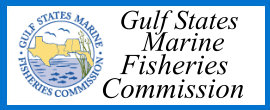
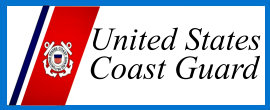
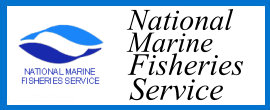
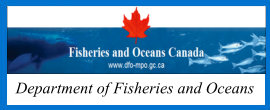


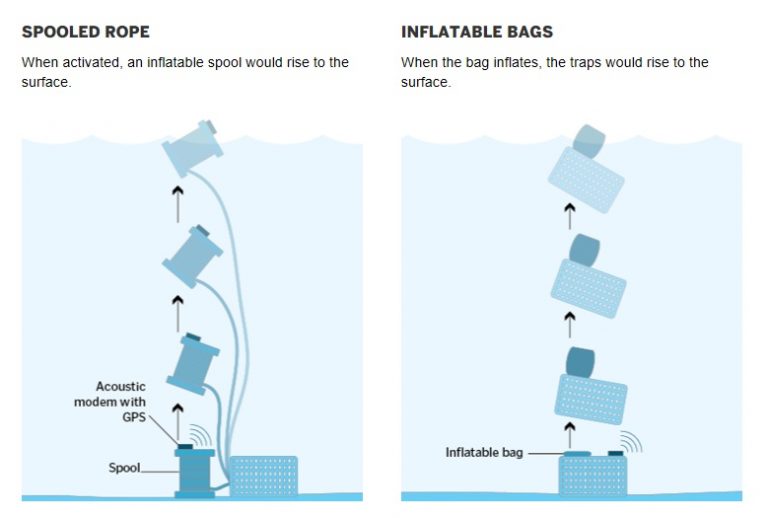

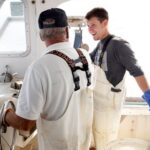



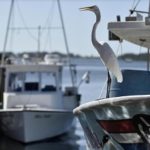

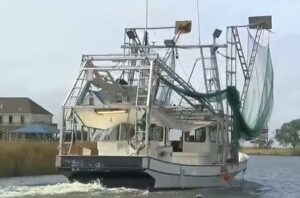
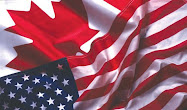

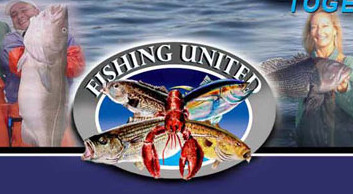
American Lobster Board Approves for Public Comment Draft Addendum XXXII to Repeal Gauge and Escape Vent Measures of Addendum XXVII
Share this post